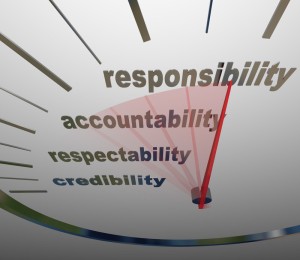Contrary to what you may think, good executives don’t want to be worshipped. – Howard Behar
Everyone has leaders they respect and admire. I know I do. Along my journey I’ve been privileged to meet some rather interesting people. Included on the list are four U.S. Presidents and other political figures, famous athletes, actors, musicians, and authors. Some had large egos while others came across as more grounded and down to earth. While the trajectory of each person’s career path took them to differing places of fame and work they each embraced their talents and made the most of it.
Within your business or organization are leaders who are striving to make a difference. Some may be succeeding on a grand scale while others are struggling to find their way. So what can you do to help your leader, and yourself, in the process? One of the first things I’d suggest you do is this: take your leader down his or her pedestal. Here’s why.
It’s all about perspective. Let’s examine this from your leader’s perspective. If you are worshipping your leader then he or she has two primary concerns they wrestle with, (1) your motives and (2) your loyalty. If you are worshipping your leader and are always kissing-up to them they will always wonder why. In addition, they tie your loyalty to their tenure and not much more.
Now let’s examine things from a different perspective and look inward. So long as you keep your leader on a pedestal you will have two primary conflicts to wrestle with, (1) freely speaking the truth out of fear of repercussion, and (2) the appearance of misplaced priorities. Each struggle has ramifications and if they are holding you back then your pedestal is your greatest obstacle moving forward.
When you take your leader(s) down from the pedestal it opens up a whole new realm of possibilities. Here’s how you can do it and why it matters.
Embrace their humanity
What most leaders want you to know is that they are surprisingly human. They have the same struggles, concerns, hopes and dreams as everyone else in the office. Just like you, your leader is not perfect and makes mistakes. Instead of being overly critical perhaps you can be a little more forgiving. So long as you idolize your leader because of their position and not as a person then you fail to see what is most important to them. At the end of the day they’d rather not be above you, they would prefer to be beside you.
Welcome authenticity
Once you take your leader(s) down from the pedestal then authenticity and transparency can begin. So long as you look at your leader through rose-colored glasses then it’s hard to move forward in a meaningful way. Open and honest working relationships include the good, the bad, and the ugly. It’s a natural by-product of being human. What makes you an adult is the way you work through the difficult times and come out on the other side with something to celebrate. An authentic leader will respect you more if you idolize them less.
Build community
Once you embrace the humanity of your leader(s) and welcome authenticity then building community is the reward. Most leaders want to build a team of committed and like-minded people who share the same vision and will work passionately to get there. So long as your leader is on a pedestal being idolized, or in a worse-case scenario – feared, then community will suffer. Your collective strengths and weaknesses form a powerful combination of all the skills you need to do great things. But it won’t happen until shoulder to shoulder you are working together in community as a team.
Taking your leader down from the pedestal is not about abolishing lines of authority or diminishing your respect. Ultimately, it’s about how to move out of an “idol” status with your leader to something more beneficial.
What do you say?
©2015 Doug Dickerson








